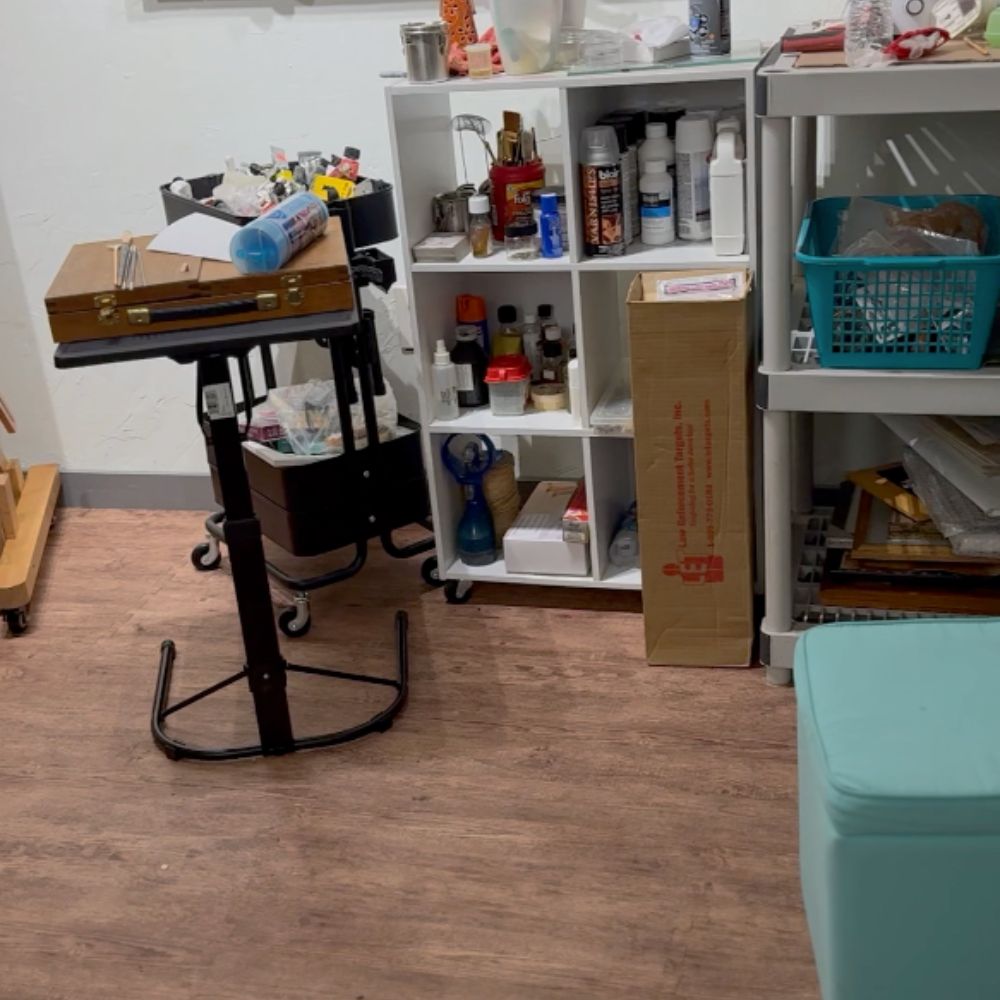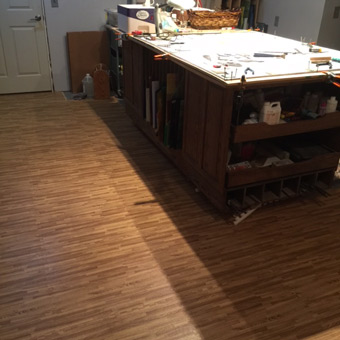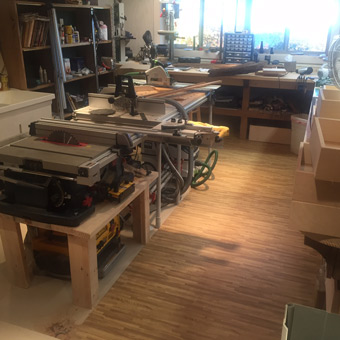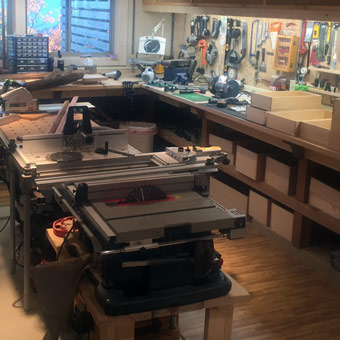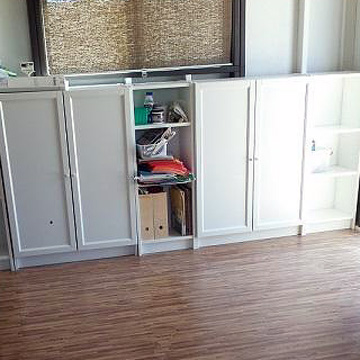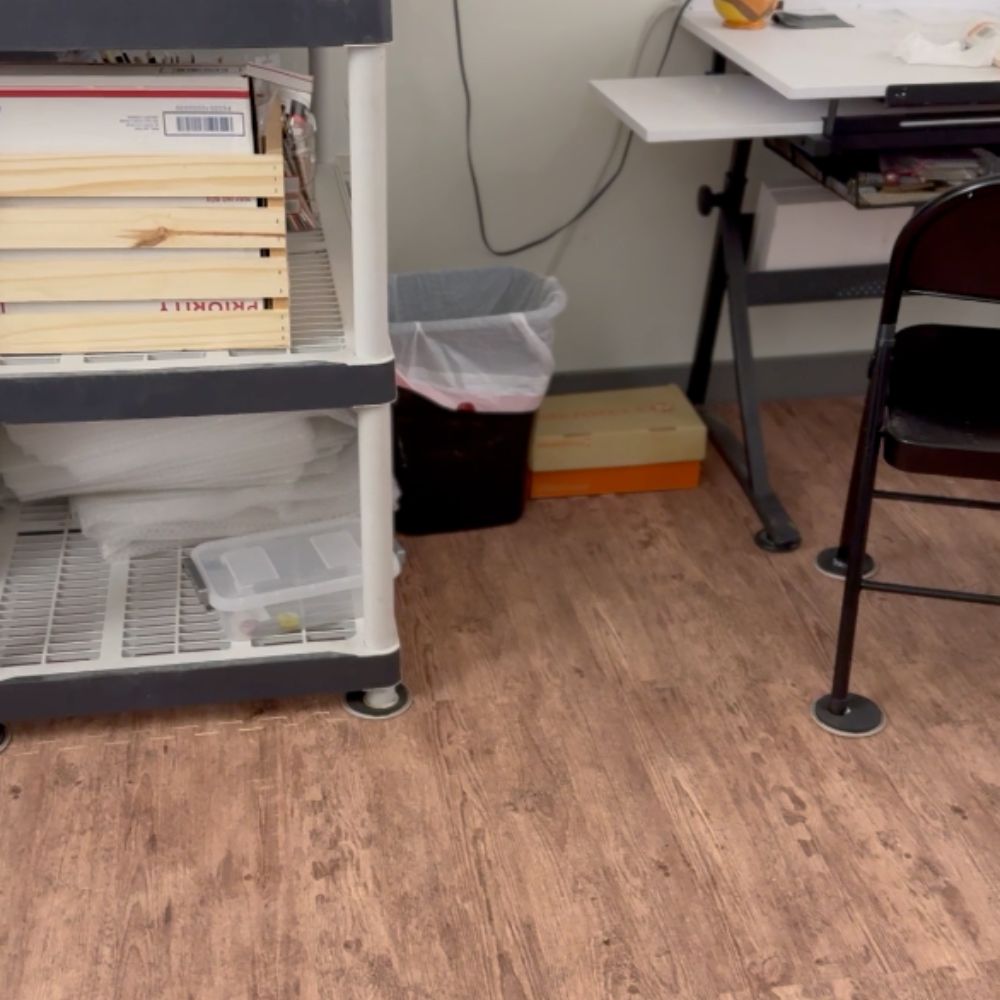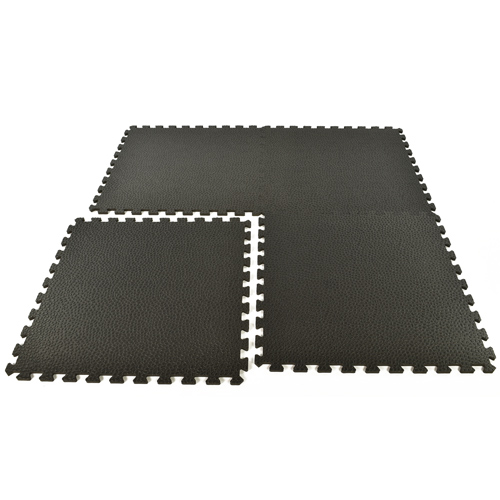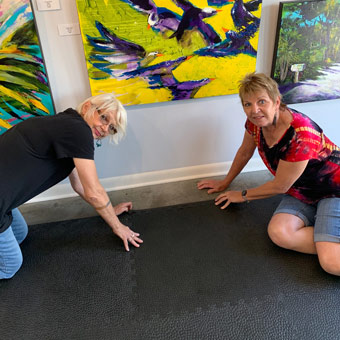What Is The Best Art Studio Flooring?
Related Product: Wood Grain Foam Tiles Reversible 1/2 Inch x 2x2 Ft.
If you’re a painter, you’ve also found that your trade can create quite a mess, depending on how aggressive you are with your paints or cleaning the brushes. Then there’s always that occasional spill. When your mind switches focus from your creative thoughts and plan of action to aches and pains, your productivity suffers. That’s why picking the proper art studio flooring is important.
At Greatmats, we carry an extensive selection of art studio flooring suitable for your home studio or your professional space. We’ve highlighted some of the best options below to help you choose.
The Best Art Studio Flooring for a Home Studio
Blending easy installation and durability, these affordable flooring products are ideal for your home studio. Use them to transform a basement or garage into your own dedicated studio space.Wood Grain Foam Tiles Reversible
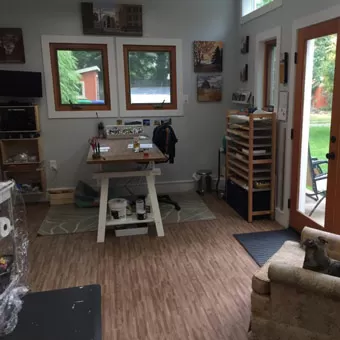
With the Wood Grain Foam Tiles Reversible, you’ll get an elegant, refined wood grain finish but in a softer tile that will help keep you comfortable as you work. These wood grain tiles are crafted from waterproof EVA foam, so they’re easy to clean. They’re a great way to add comfort and buffer the cold of a basement or garage floor, plus the tiles are easy to install and are portable if you need to remove them.
Foam Tiles Wood Grain
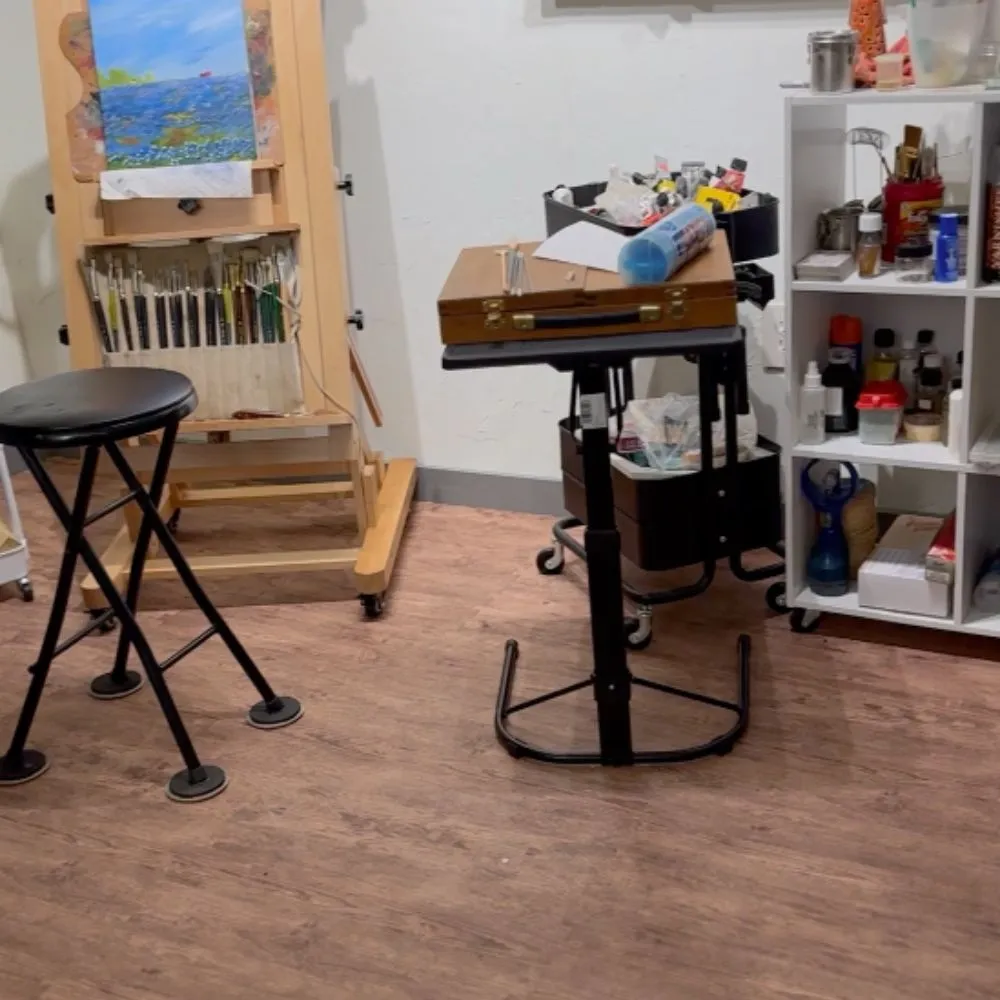
The Foam Tiles Wood Grain are available in four rustic wood grain options, so you can preserve a distinct aesthetic in your studio while prioritizing your comfort. These tiles create a cushioned, comfortable surface to allow you to work for longer periods, and since they’re waterproof, cleanup is easy. Measuring 2x2 feet, the tiles are easily portable and will quickly cover your studio floor. They’re very easy to install and fit together like puzzle pieces.
Don’t take our word for it - hear from Cheryl, an artist, about how she used these tiles to makeover her art studio.
Gym Floor Workout Fitness Tile Pebble
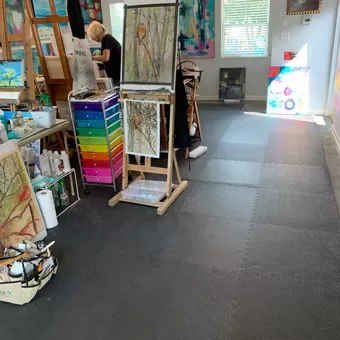
The Gym Floor Workout Fitness Tile Pebble is made of lightweight EVA foam, but it’s supremely durable. The pebble texture is slip-resistant for your safety, and since the tiles are waterproof, cleanup is easy. These tiles are strong enough to support the weight of exercise equipment, so you can place heavier pottery or paint equipment on them without damaging them. They include border strips for an installation with clean, finished edges.
StayLock Tile Bump Top
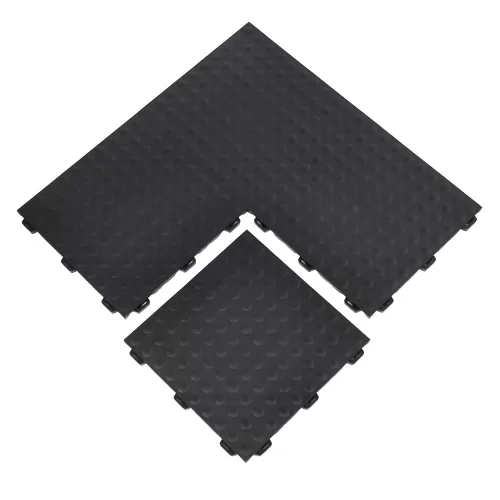
If you find that your legs are often sore after working in your studio, the StayLock Tile Bump Top might be an ideal solution. These tiles feature the durability of rubber but the cushioning of foam. They help prevent fatigue while you’re standing, and they’re waterproof for easy maintenance. The tiles are easy to install and can be placed directly over hard surfaces or low-pile carpet to transform your room.
StayLock Tile Orange Peel
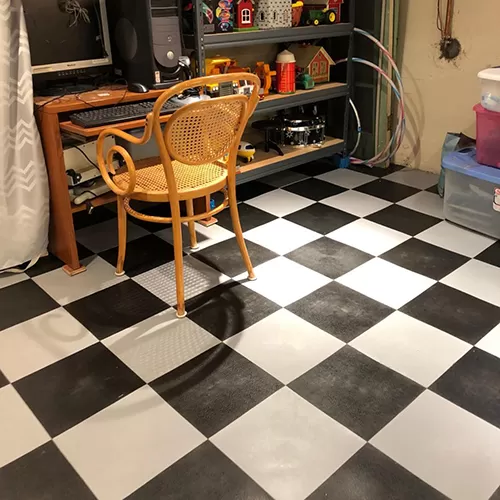
Maximize your comfort and safety in your art studio with the StayLock Tile Orange Peel. These tiles feature the durability of rubber but the cushion of foam, plus they’re waterproof for easy cleaning. An orange peel-like texture maximizes traction, plus the tiles feature a 20-inch ASTM fall height rating to help prevent injuries from falls from lower heights. They pop together easily for a quick installation.
Envee Tacky Back LVT Laminate Tiles
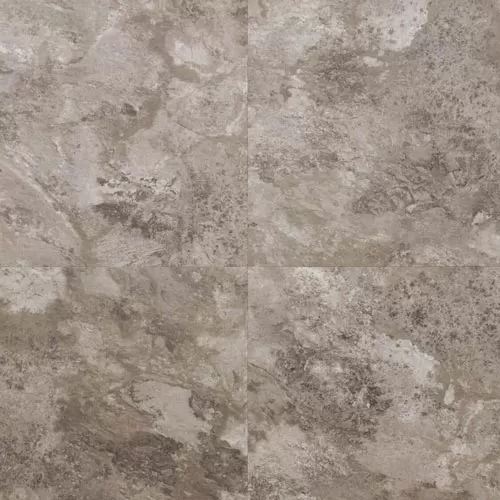
Get a luxury, eye-catching stone look for your studio with the Envee Tacky Back LVT Laminate Tiles. While these tiles look like real stone, they’re a slip- and stain-resistant choice ideal for studio use. The tiles feature a wear layer for enhanced durability, and the peel-and-stick backing makes installing this flooring quick and easy.
The Best Art Studio Flooring for a Commercial Studio
Commercial studios see high amounts of traffic and lots of use, so flooring for an art studio in a commercial space needs to be extra durable and strong. We’ve highlighted some of the best products for commercial use to give you some ideas.Tuff Seal Warehouse Garage Floor Tile
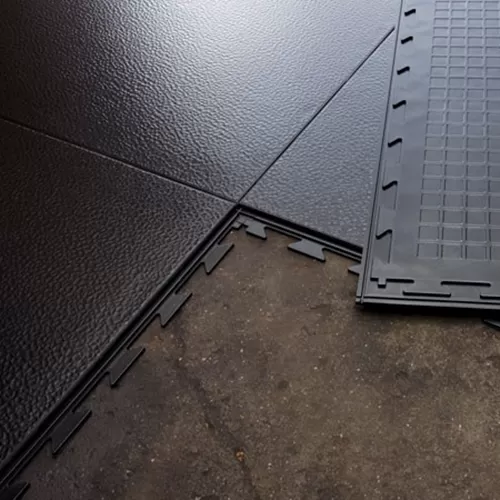
The Tuff Seal Warehouse Garage Floor Tile is a highly durable flooring tile built for commercial spaces. Crafted from recycled materials, this tile provides comfort and can be installed on a flat interior surface. There’s no adhesive needed, since the tiles fit together tightly for a long-lasting installation. You can even remove them if needed. These tiles are available in black and in colors.
SupraTile Hidden Leather
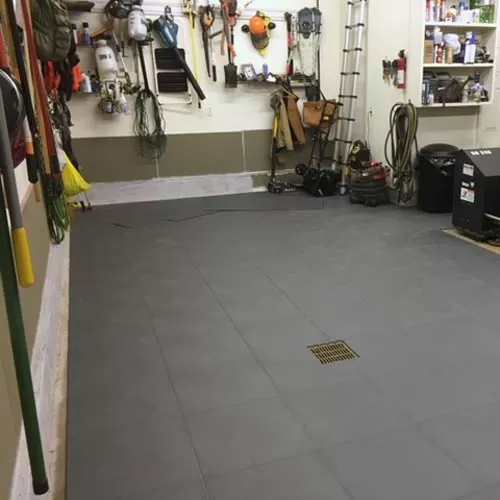
The SupraTile Hidden Leather tiles are supremely strong, and each tile can support up to 20,000 pounds. Designed for heavy-duty industrial use, these tiles are an excellent choice for a commercial studio where you have heavy equipment and furniture. They’re resistant to oil, chemicals, mold, and mildew, and help maximize comfort. Interlocking edges make the installation process quick.
SupraTile Hidden Slate
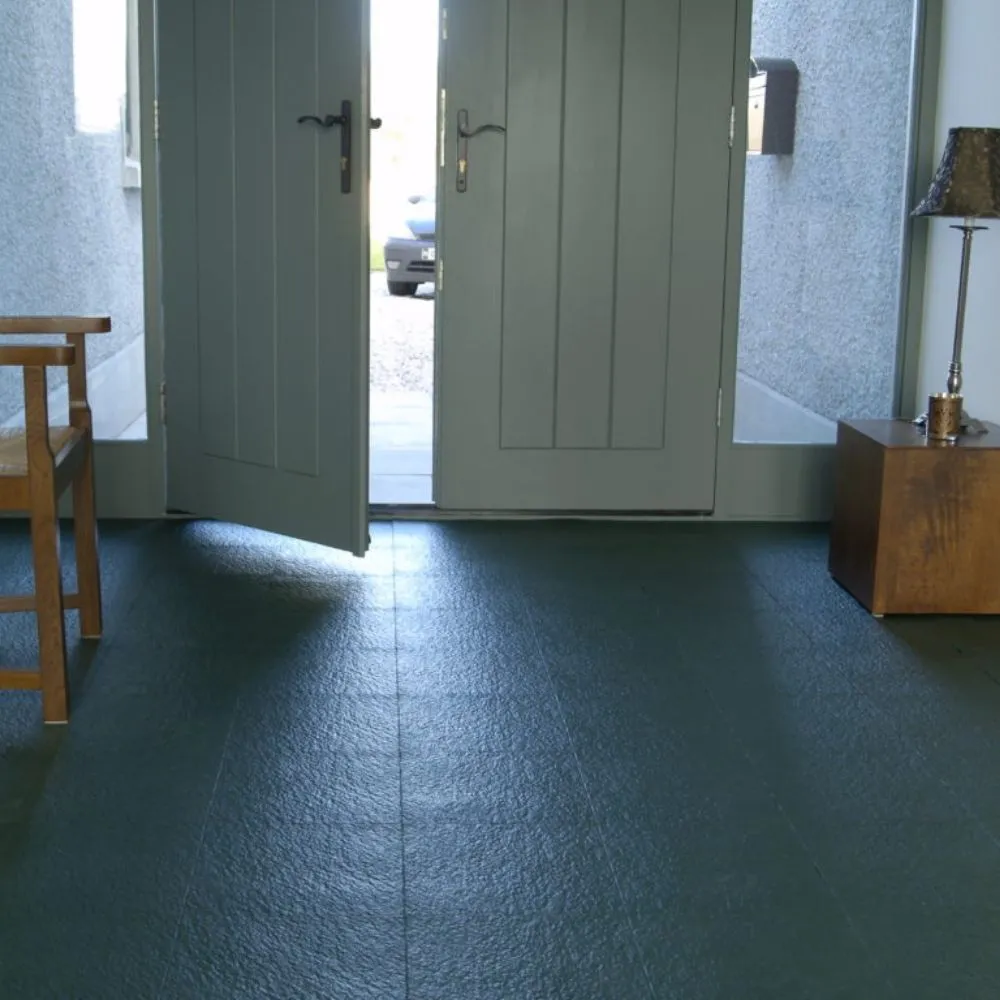
The SupraTile Hidden Slate tiles are highly durable, but they add a warm and comfortable surface to your commercial art studio. They’re resistant to impacts, moisture, abrasions, oils, chemicals, mold, and mildew, making them a long-lasting choice that’s easy to maintain. The tiles help absorb sound to make your studio more enjoyable, and they’re easy to install, thanks to their interlocking design.
